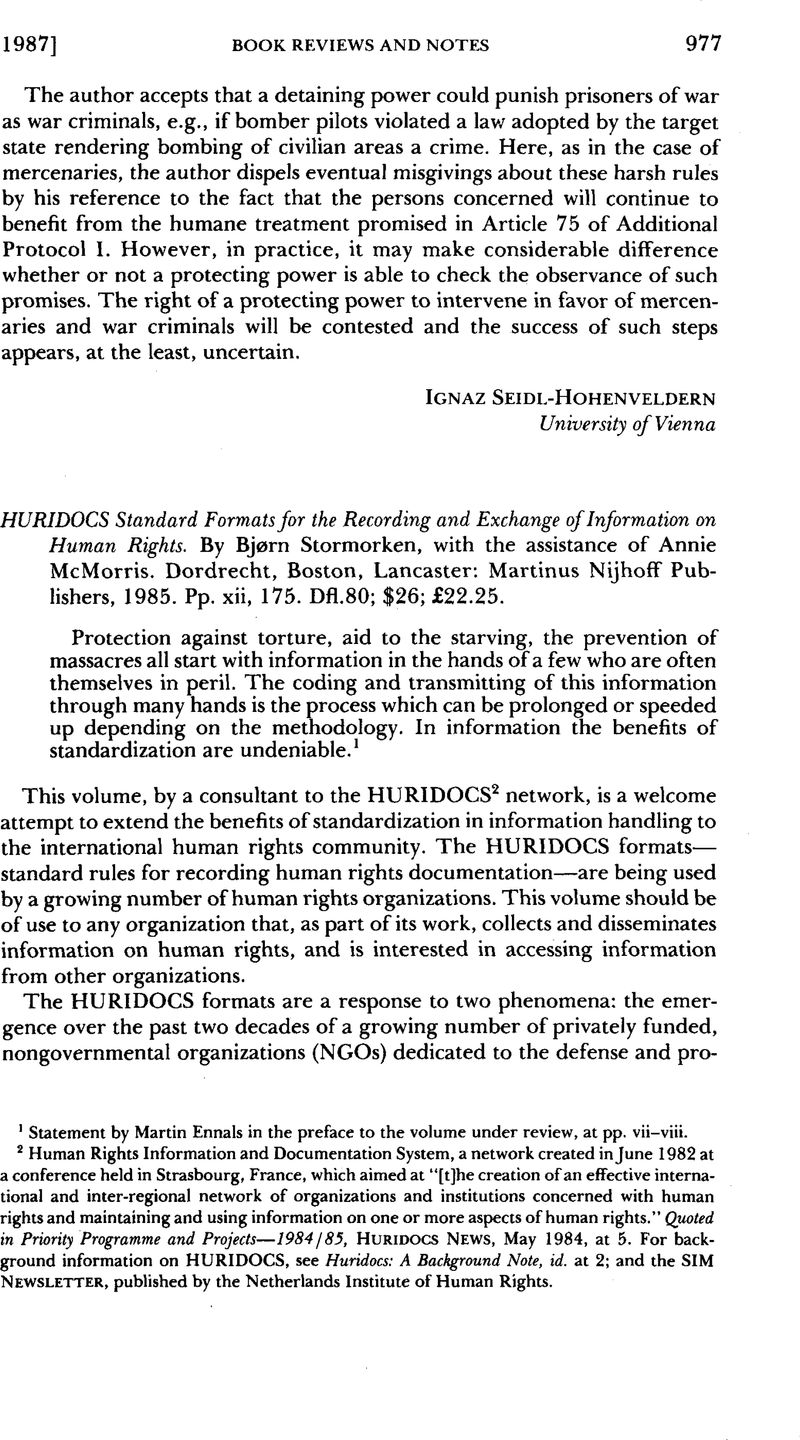No CrossRef data available.
Article contents
HURIDOCS Standard Formats for the Recording and Exchange of Information on Human Rights. By Bjørn Stormorken, with the assistance of Annie McMorris. Dordrecht, Boston, Lancaster: Martinus Nijhoff Publishers, 1985. Pp. xii, 175. Dfl.80; $26; £22.25.
Published online by Cambridge University Press: 27 February 2017
Abstract

- Type
- Book Reviews and Notes
- Information
- Copyright
- Copyright © American Society of International Law 1987
References
1 Statement by Martin Ennals in the preface to the volume under review, at pp. vii–viii.
2 Human Rights Information and Documentation System, a network created in June 1982 at a conference held in Strasbourg, France, which aimed at “[t]he creation of an effective international and inter-regional network of organizations and institutions concerned with human rights and maintaining and using information on one or more aspects of human rights.” Quotedin Priority Programme and Projects—1984/85, Huridocs News, May 1984, at 5. For background information on Huridocs, see Huridocs: A Background Note, id. at 2; and the Sim Newsletter, published by the Netherlands Institute of Human Rights.
3 See, e.g., Rodley, , Monitoring Human Rights in the 1980’s, in Domínguez, J. I., Rodley, N., Wood, B. & Falk, R., Enhancing Global Human Rights 117 (1979)Google Scholar; Weissbrodt, , The Role of International Nongovernmental Organizations in the Implementation of Human Rights, 12 Tex. Int’l L.J. 293 (1979)Google Scholar; Wiseberg, & Scoble, , Recent Trends in the Expanding Universe of Nongovernmental Organizations Dedicated to the Protection of Human Rights, Den. J. Int’l L. & Pol’y 627 (1979)Google Scholar.
4 For “machine-readable cataloging,” which has become, since the 1960s, the basis of international exchange of bibliographic data.




